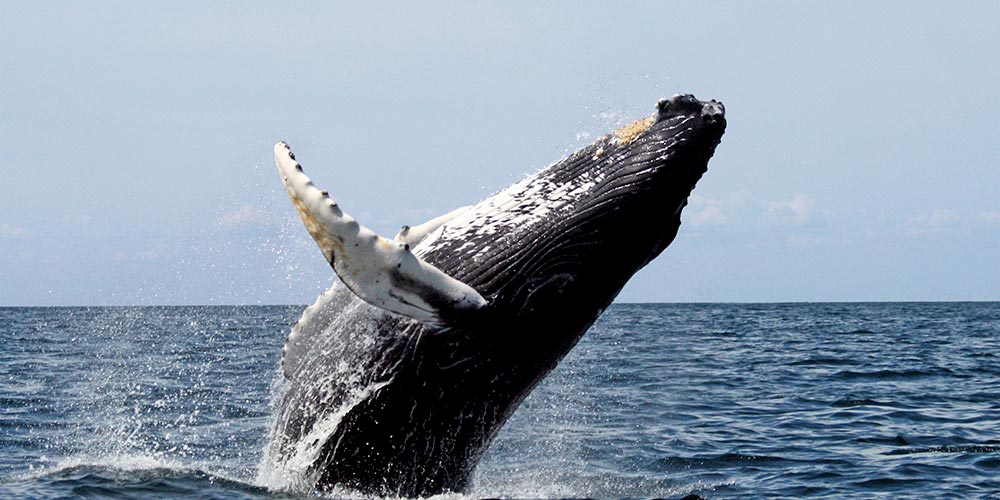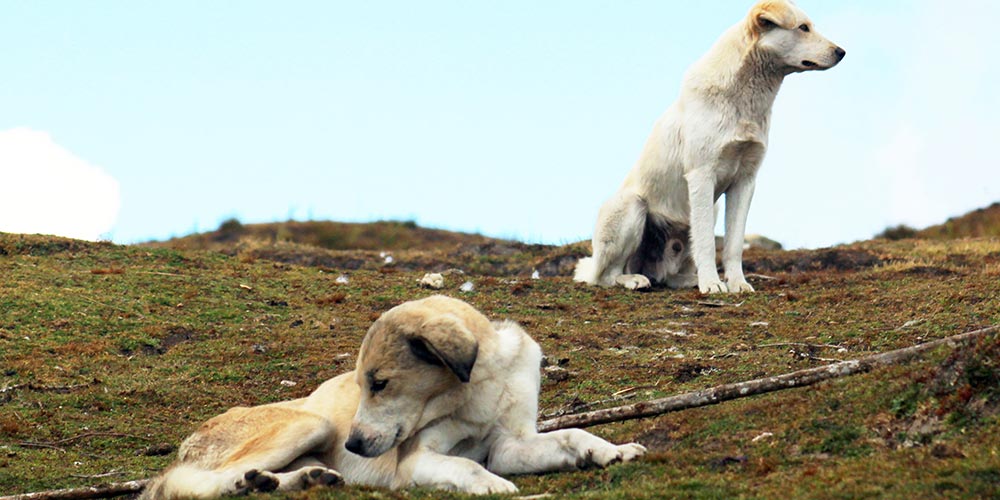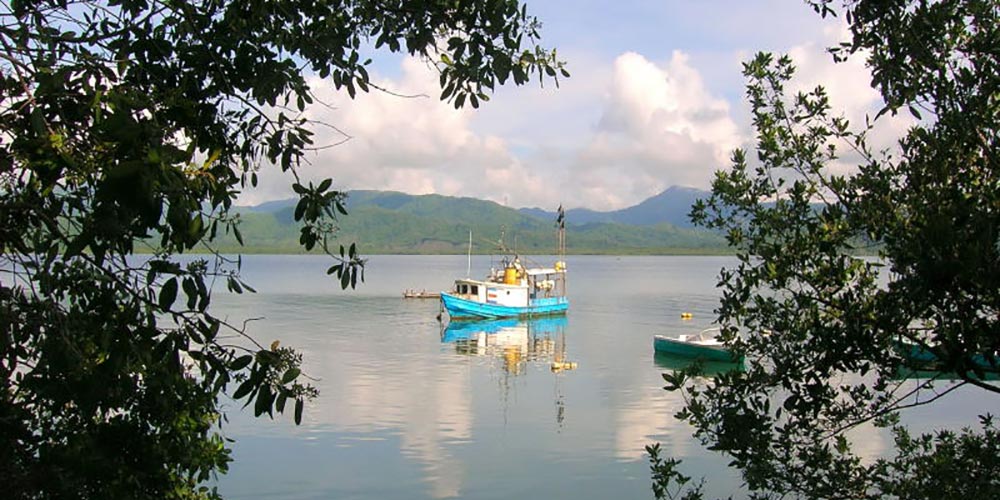
From July to October, you will be able to watch the spectacle offered by humpback whales and dolphins on the Pacific coast of our country. This massive event has developed an important growth in tourism in the area, especially with the sighting of those majestic mammals that attracts tourists from all over the world.
The tropical climate of our country makes the temperature of the ocean perfect for humpback whales, they travel thousands of kilometers from Alaska or different parts of the continent to the shores of our country to give birth to their young. Another reason why they massively come to Costa Rica is the amount of food provided in the southern Pacific Coast, this is due to the number of conserved areas and national parks in this area.
Whale watching is a unique experience, these huge animals are so imposing and delight the watchers with such a peaceful scenery. You’ll be able to observe their full body while jumping out of the water, their majestic and elegant tail, their big eyes, and the “small” calf right next to them. Once you spot a whale in the ocean expect to see more, they always travel in groups. Interactions with whales have been banned by the Costa Rican government, so every year we get to see more whales in Costa Rican waters. Nevertheless, if you are scuba diving and come across one, admire their beauty and feel privileged to watch them freely, in their natural habitat.
The most famous place to do this activity is in the South Pacific part of Costa Rica, from Uvita to Osa. Whales commonly swim by Drake Bay, named for the Pirate Sir Francis Drake in the 16th century who used the bay to hide treasures from the English pirates. Near the bay is “Isla del Caño” a small island that was declared a national park, and has a quite varied marine fauna making it an ideal place to practice snorkeling or scuba diving. Also, if you are located in a home or hotel with ocean view in Uvita or Dominical you might be lucky to watch some of these from the balcony, or even sometimes whales get close to the coasts and you can appreciate them from the sand on the horizon.
The most common way to attend to this activity is to buy a boat tour that takes you to the open sea to be able to see the whales and dolphins for a full day or half a day, so booking at a hotel in the area is preferable by the attendees. The area is quite visited by fishing fanatics, divers or common for various maritime activities or even explorers who hike through the Corcovado National Park. Tours for this majestic activity are all over the Pacific coast, you can book it at any hotel or tour store.
There are few more beautiful experiences than whale watching, especially a humpback whale swimming with its calf both lifting tails, their pectoral fins or even when they jump together a natural wild show. If you visit Costa Rica or you live here, its a must in the checklist, one-lifetime experience!

Among runways, nutritive discussions, food stands, and many dogs, last Saturday we celebrated a total party at the first dog food festival the “Doggie Food Fest” in Lindora,San Jose. Dozens of pets with their owners showed up and were able to enjoy a nice morning with activities such as and share tips of nutrition and training with professionals. A great activity for our 4 legged friends!
These type of activities in the country increasingly acquired more support after May 2017, when the Costa Rican Congress approved a law that punishes up to two years in prison for the mistreatment of domestic animals, as well as economic fines. This movement also increases the awareness of the treatment of animals and especially the responsibility that comes with having a pet.
The ideology of “Pet Friendly” becomes stronger each day and is portrayed in cafeterias, restaurants, hotels or even commercial establishments. This policy has allowed several establishments to be more popular not only for allowing pets but for a special attention for the animals which includes water buckets and treats while gaining the loyalty of consumers throughout an excellent marketing strategy.
This law led to the opening of dog parks in different areas of the city, where a close space is provided for pets to play and many of them with water fountains as well as different ramps and tunnels. In most of Costa Rican beaches, you’ll be able to appreciate dogs running freely and having fun in the ocean. Some places charge a minimum extra fee per day or per stay for bringing your dog, but others don’t. This movement also reinforces the owners to be responsible and clean after their dogs, that’s why in parks, beaches, national parks, you’ll find dog stands with garbage bags.
Costa Rica has the largest dog shelter in the world called “Territorio de Zaguates”, with an approximate of 700 dogs, plenty of acres of open field to run and play. Something very important about this project is that during the weekends they receive visits from volunteers to help them with the maintenance as well as people who are willing to adopt and give a better life to the dogs. Another case which shows the solidarity with animals is with the fire brigade who have created dog eaters with plastic bottles so that street dogs can have access food and fresh water during the day, this was implemented in different municipalities of the country.
Costa Rica is a country with almost 2% of the world’s biodiversity, with animals of all types, sizes and colors. Ironically, until a few years ago, the image of domestic animals has been changed. Awareness campaigns, social networking groups, and non-profit organizations help encourage people to give the best life possible to our four-legged friends.

Last Tuesday, May 8th, Costa Rica was a witness of the transfer of power between the outgoing government of the Solis-Rivera administration and the new government, commanded by the new president elected over a month ago, Carlos Alvarado. He is part of the same party as the former government, and becomes president of this beautiful country only at age 38, being the youngest president in the history of the nation.
The event consisted of a total of 106 delegations from different countries, including 6 presidents such as Panama, Ecuador, Guatemala and the Dominican Republic as well as President Evo Morales of Bolivia. The venue designated for such a prestigious and important ceremony was the Plaza de la Democracia (Democracy Plaza), created in 1989 during the first government of former President Oscar Arias Sanchez. The importance of this place for Costa Ricans is absolute, place of the Bella Vista Barracks where the army was abolished on December 1st, 1948.
One of the biggest features that the country experienced on Tuesday was the humility and transparency with which the new president of the country arrived. As much as his wife and first lady, Claudia Dobles, they both decided to use only nationally designed clothes and accessories, thus promoting the hard work of thousands of Costa Rican designers, which highlights their strong national identity and feeling.
However, the center of attention was their arrival in a private bus which his entire cabinet, giving a great example of how carpool and public transportation reduces the environmental impact. Don Carlos made his first appearance as president in a carbon neutral bus created and developed by former Costa Rican astronaut and physicist Franklin Chang Diaz, once again showing his pride for his country and people. The name of the bus is “N’YU’TI”, which means star in Chorotega, the language of ancient indigenous populations that inhabit the country. This electric bus that runs on hydrogen fuel will take Alvarado’s cabinet on a 3.3km route, leaving from the Costa Rican Art Museum to the Plaza de la Democracia.
The transfer of powers is a ceremony with feelings and national identity, in which everyone feels proud of the democracy that exists in the country, regardless of the electoral party supported. More than 3,000 attendees and people who felt it in through homes, jobs, hospitals, “sodas”, were satisfied by how the event went and hoped the best luck to the new president of Costa Rica, Carlos Alvarado.

I have lived on the ‘Island of Nicoya’ for over 26 years. Located on the bottom of the peninsula of Nicoya, you will find one of the most beautiful parts of Costa Rica, with an abundance of nature and minimum commercial development. Not technically an island, the access to this area over the years has been by boat or by plane, as is true with all islands. Before the Barceló company began the ferry service here, there were only a few boats that carried people, crops, and livestock to the markets of Puntarenas and back. During the years the ferry service has been improving, adding more boats with bigger capacity. Nowadays, there is a third ferry that carries 160 cars back an forth on 7 different trips daily. This service alleviated the problem of commerce and travel between the Lower Peninsula and the Costa Rican mainland.
Each additional ferry helped every time a little more, increasing tourism as well as commerce and the development of the area. There is an actual road to the north of us that connects the Lower Peninsula to the Guanacaste Upper Peninsula, but that road has been a nightmare to travel on for 50 years. It is a road that technically exists but it is only used as a last resource. The road was poorly designed and maintained, the washboard sections lead to deep holes, constant landslides, hills of soft silt and sections that have fallen into deep ravines dangerously cutting into half of the road. It is an uncomfortable and dangerous road, mostly during the rainy season. Locals would rather pay the $25 ferry fare to inspect their cars in Puntarenas than travel to Nicoya on this road. The government has promised to pave the road for over 25 years without any action. Each administration has been very good at ‘kicking the can down the road’ to the next administration.
When Highway 27 was completed from San Jose to Puntarenas, there was real hope that the government would fulfill their promise. In July 2015 the demonstrations became serious as residents took to the streets, and complained about the unpaved road. This time, the government got the message and negotiations began, promising a road for 2016. It is now, on May 2018, when machinery has finally arrived at the area. The negotiation of building a new road from Naranjo to Paquera ended last year.
There is a budget of US $27.5 million for 21.6 kilometers that needs to be done totally new, including 3 bridges that will be redesigned and rebuilt to have two lanes. In addition, the maintenance will be part of this budget as well as the correct signals along the road and security measures. An important aspect of this needed investment consists of building land and aerial wildlife corridors, to benefit the wildlife of the area as well. This road will increase tourism, commerce and improve the lifestyle of the towns around since dust will be reduced with the new pavement.
Jim Shaw
jim@propertiesincostarica.com




